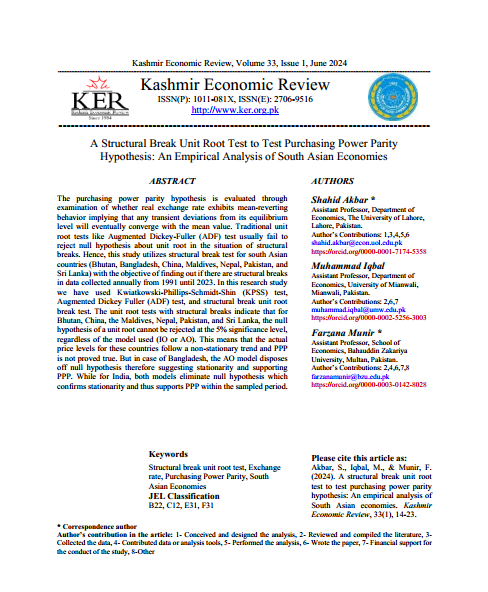A Structural Break Unit Root Test to Test Purchasing Power Parity Hypothesis: An Empirical Analysis of South Asian Economies
Main Article Content
Abstract
The purchasing power parity hypothesis is evaluated through
examination of whether real exchange rate exhibits mean-reverting
behavior implying that any transient deviations from its equilibrium
level will eventually converge with the mean value. Traditional unit
root tests like Augmented Dickey-Fuller (ADF) test usually fail to
reject null hypothesis about unit root in the situation of structural
breaks. Hence, this study utilizes structural break test for south Asian
countries (Bhutan, Bangladesh, China, Maldives, Nepal, Pakistan, and
Sri Lanka) with the objective offinding out if there are structural breaks
in data collected annually from 1991 until 2023. In this research study
we have used Kwiatkowski-Phillips-Schmidt-Shin (KPSS) test,
Augmented Dickey Fuller (ADF) test, and structural break unit root
break test. The unit root tests with structural breaks indicate that for
Bhutan, China, the Maldives, Nepal, Pakistan, and Sri Lanka, the null
hypothesis of a unit root cannot be rejected at the 5% significance level,
regardless of the model used (IO or AO). This means that the actual
price levels for these countries follow a non-stationary trend and PPP
is not proved true. But in case of Bangladesh, the AO model disposes
off null hypothesis therefore suggesting stationarity and supporting
PPP. While for India, both models eliminate null hypothesis which
confirms stationarity and thus supports PPP within the sampled period.
Article Details

This work is licensed under a Creative Commons Attribution-ShareAlike 4.0 International License.

